January Virtual Walking Tour – Tropicals
In a normal January, we usually offer a walking tour of some of the indoor tropical display areas. This year has been anything but normal. Since this tour must be virtual and walking around the display areas is not an option, why not go to some spaces where the public is not allowed to walk to at all? Join me in the collection greenhouses to see what’s going on.
Amorphophallus titanum
Corpse flowers alternate between vegetative (leaf) and reproductive (flowering) growth phases. Both Stinky and Little Stinker are currently in the early stages of a 12-14 month vegetative growth spurt. During this period, the single leaf of each plant is collecting energy through photosynthesis to power the next flowering. Since producing such a big floral display takes so much energy, it may take more than one vegetative stage to store up the energy needed to pull off the next show. With that in mind, it will likely be at least summer of 2022 before we see another odiferous display.
Lithops
Lithops (sometimes known as Living Stones) are small succulent plants native to rocky grassland areas of South Africa. The base of the plant is often buried in rock or sand, reducing the amount of light that the plants receive. The translucent cap on each leaf allows light to enter the interior of the leaf, allowing photosynthesis to occur from the inside out.
Visitors often ask, "Where do you get all these cool plants?" One important source is a program known as Index Seminum – Latin for "Seed Index." Hundreds of botanic gardens and arboreta from around the world participate in this program to share seeds from their collections with other botanical/research institutions. These tiny Lithops lesliei seedlings grew from seed provided by The University of Tübingen, Germany.
Victoria amazonica
This vial of seeds (currently in cool storage) contains the promise of a stunning summer display of giant water platters – Victoria amazonica. In February/March, these seeds will be started in small pots of soil placed in heated tubs of water in our collection greenhouses. The seedlings will then be moved to the outdoor pools (usually sometime in June, weather permitting) and will reach their full glory in July and August. It is remarkable growth in such a short amount of time. Here is more information on this process.
Miniature Orchids
Many of the orchids in the Gardens’ collection are brought from the collection houses to public display areas as they come into bloom. But some are just too small and delicate to be moved to the less-than-optimum conditions some of the public areas provide. One such beauty is Lepanthes telipogoniflora. This miniature plant comes from warm and very humid areas of Colombia where it grows as an epiphyte attached to tree limbs. The tiny flowers (about 1/2 inch) arise from leaf axis’s supporting leaves of about the same size.
Dracaena masoniana
As more information about plant relationships emerge, name changes are sometimes needed to reflect this new knowledge (much to the consternation of many horticulturists). Some of you may know this plant as Sansevieria masoniana and others just as Snake Plant, but the correct name (for now) is Dracaena masoniana. Winter months can be a good time to catch up on some reading and take in all these name changes, if you’re into that sort of thing.
Dracaena masoniana is a spectacular plant–whatever the name. It is native to central Africa and because of its potentially massive size, it is sometimes known as the whale fin snake plant.
I hope you’ve enjoyed this peek behind the scenes. We look forward to the day we can re-open our public tropical display areas!
Gallery
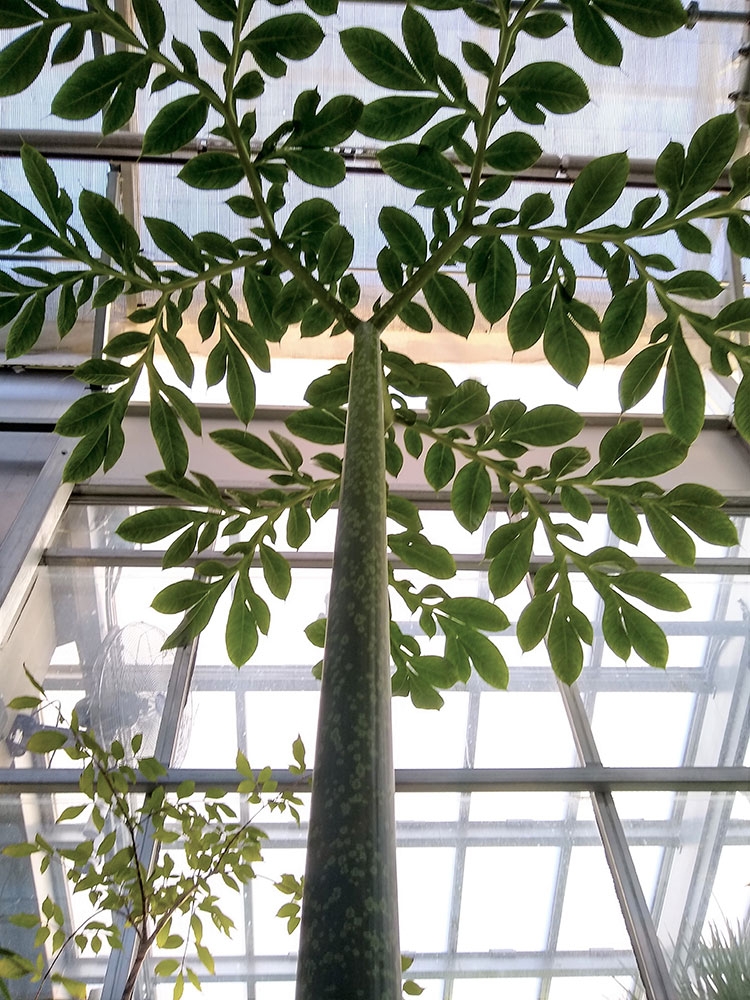
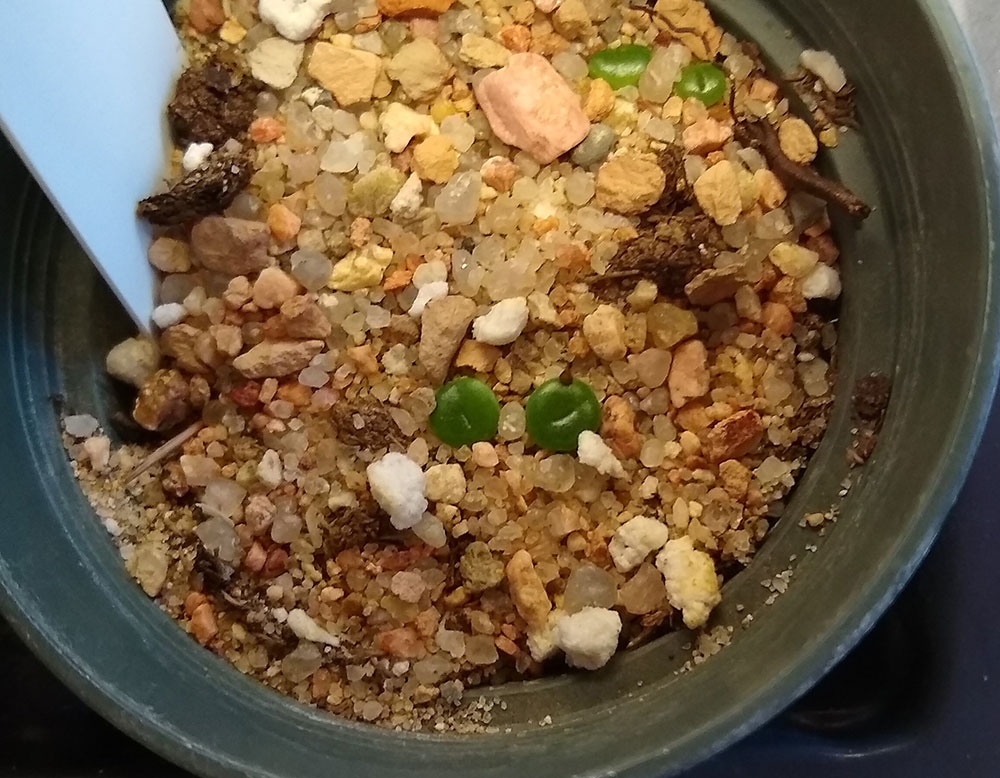
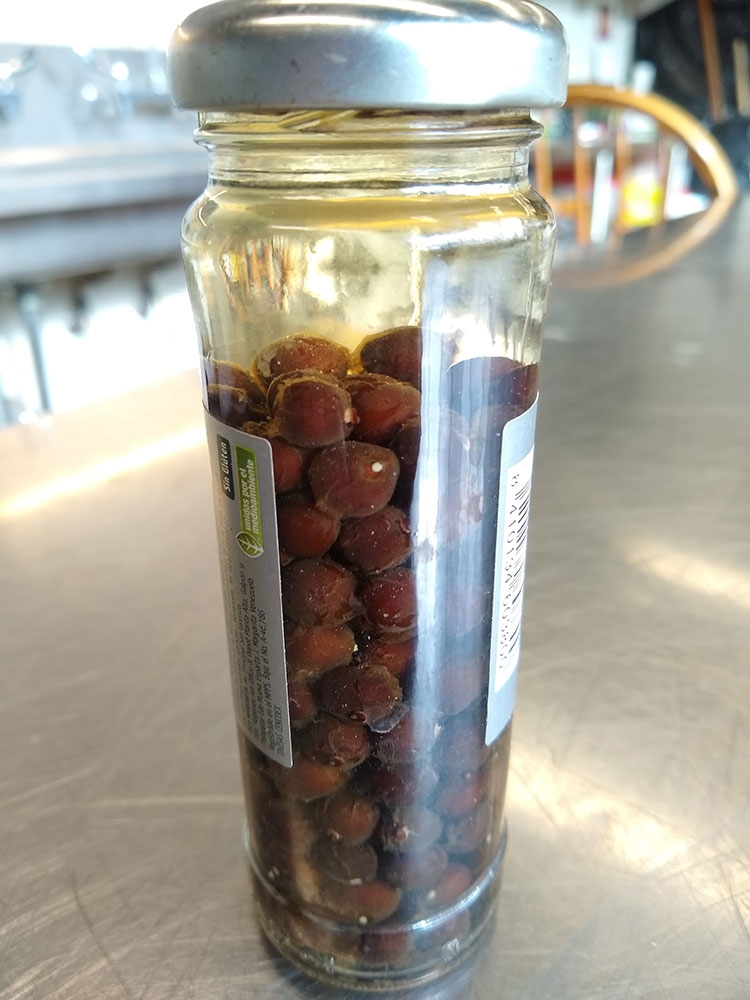
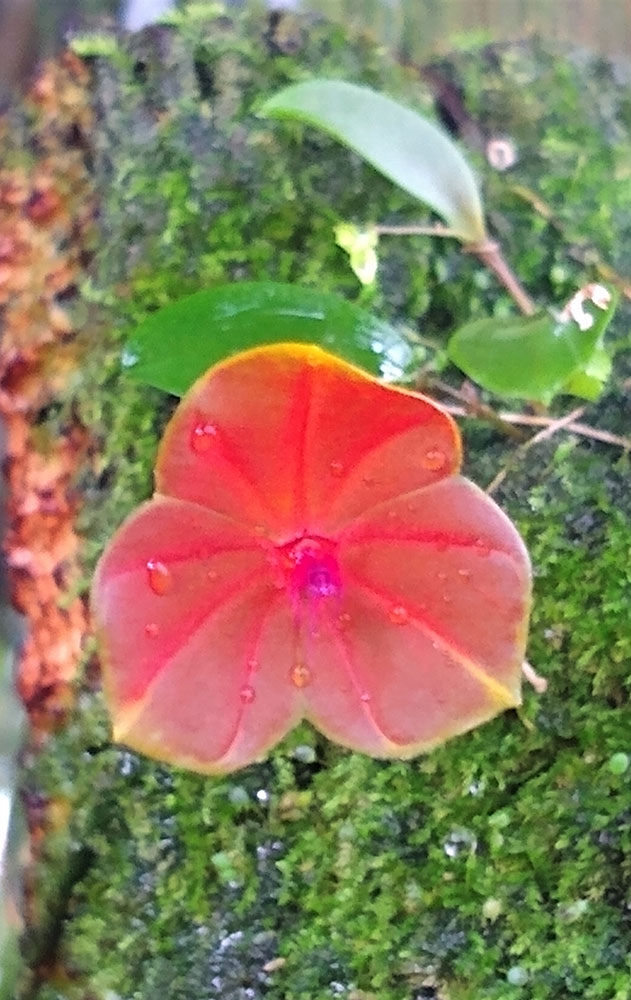
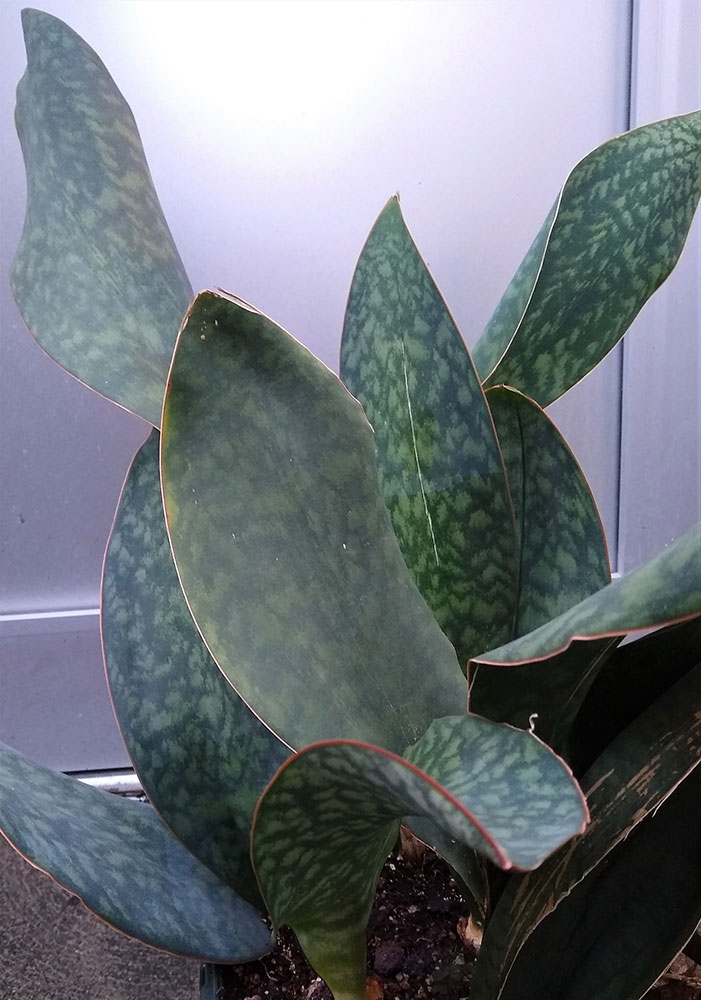
Add new comment